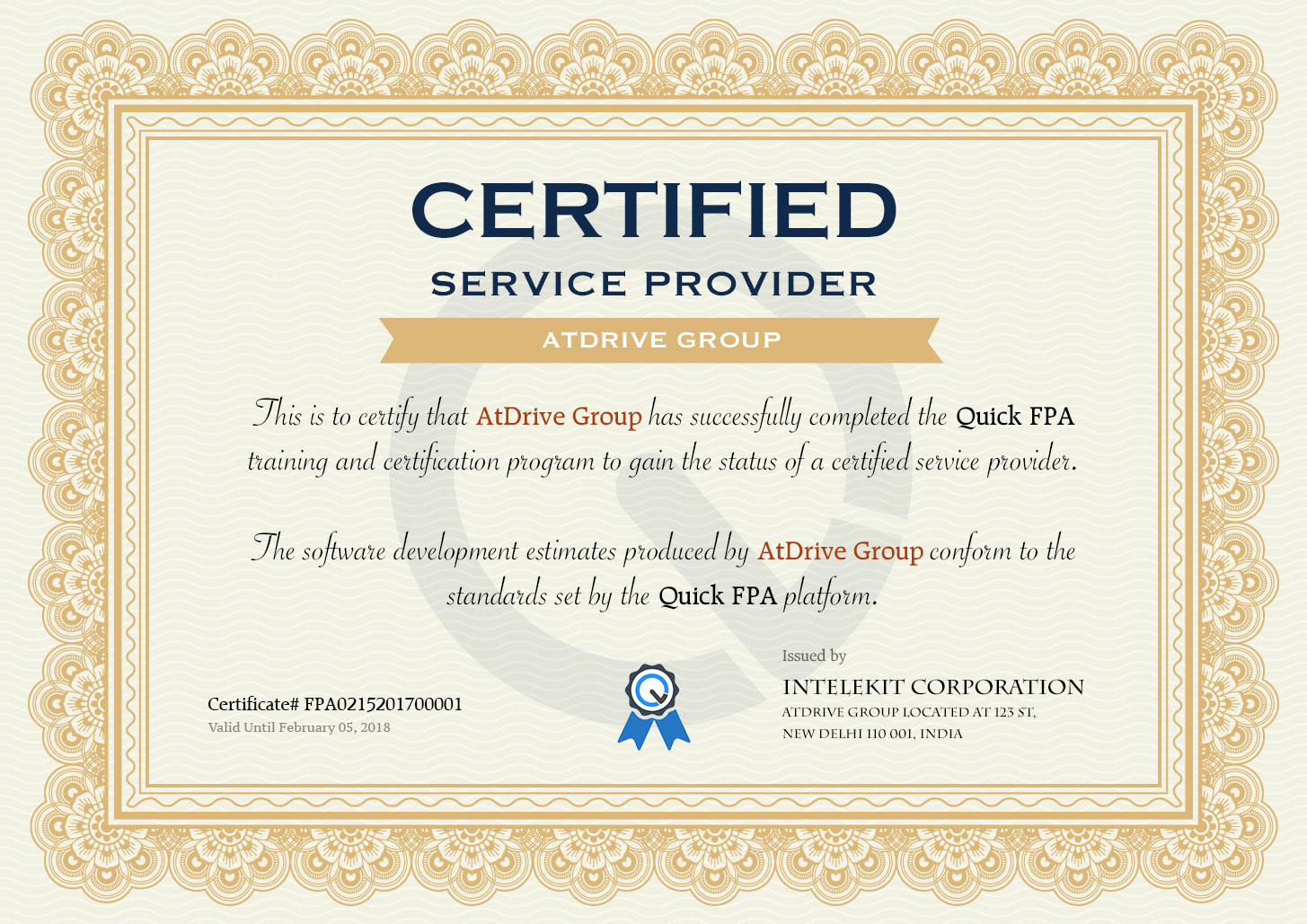
Quick FPA certified providers have to go through a selection process and an intensive training program to learn the estimation tool and the concepts that drive the process. During this training the providers learn the techniques for performing a thorough use case analysis and defining their implementations in a meaningful and understandable format. The estimates produced by trained and certified providers contain all the details of various technical implementations in a format that is very easy to understand. These estimates clearly justify the proposed cost and effort to execute the project.
Quick FPA Certification is available only to companies who are serious about improving their estimation process and helping clients succeed with their projects.
More than 60% of software projects fail to provide any return on investment due to various reasons mainly stemming from poor estimation and incorrect analysis of project requirements. It is extremely important to work with developers who have clearly understood the scope of the project. The stakeholder can benefit from the actual implementation only when the implementation aligns with the stakeholder's business goals.
Quick FPA Certification program eliminates the chances of project failures by ensuring that trained professionals use the right tools to analyze the project requirements and produce detailed and accurate estimates with upfront costs, so the stakeholders can move forward without the fear of any unknowns.
A company that takes your business goals seriously will put in the effort to provide you with a well defined scope of the project. That is when you can be assured that your project will be delivered within your budget.

Different developers view and define different software implementations differently. Setting up the estimation platform to reflect the technical and analytical capabilities of an organization is a critical task. Quick FPA certified providers are trained to understand the various setup parameters so they can map their development methodology to their estimation methodology.

A use case is defined as any user action that results in an output. Use case analysis requires the understanding of these user actions and how they translate to different types of software implementations. We provide a lot of emphasis on the techniques that help with identifying software use cases correctly. This forms the basis for accurate software estimation.

Implementation effort by the developers can be distributed across multiple screens affected by a given use case. Identifying the screens related to each use case helps visualize the end product in an effective manner. The distribution of effort across various screens also helps with efficient project tracking and management and keeps the developers productive during the implementation phase.

Software testing is the most important phase during a project but is unfortunately ignored by most service providers. We train our providers to identify each and every testing environment during the estimation phase and setup proper test levels for each environment to calculate the total testing effort for the project accurately. This ensures a higher quality software.

Once the project enters its execution phase, it is important that the project managers have access to the benchmarks that must be enforced in order to meet the respective due dates for different milestones. Quick FPA estimates serve as an ideal reference to the project managers so they can create effective plans by mapping them with the project estimate. This keeps the project under budget and helps identify the causes behind any inefficiencies.

The communication gap between the developers and the stakeholders is often the cause of most project failures. Quick FPA bridges this gap through the documentation that captures all the project details in a format that can be understood by both the developers and the stakeholders. Our certified providers are trained to find this balance by configuring the estimation setup in ways that help produce estimates that serve well to both types of audience.